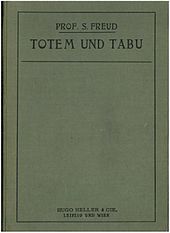1913: the summer of the century
1913: The summer of the century is a book by Florian Illies . It was first published on October 23, 2012 by S. Fischer Verlag and deals with the partly political, but mainly cultural events of 1913 , the year before the outbreak of the First World War .
content

Florian Illies reports in sections that mostly consist of a few pages, sometimes even just a single sentence, of the events of 1913. He mainly focuses on social events and anecdotes , which he tells in the present tense and comments ironically. His main focus is on biographical issues, especially about painters and writers, and the art business. Florian Illies devotes a relatively large amount of space to the relationships between Oskar Kokoschka and Alma Mahler , Franz Kafka and Felice Bauer , Sigmund Freud and Carl Gustav Jung , Rainer Maria Rilke and Sidonie Nádherný , Gottfried Benn and Else Lasker-Schüler , and Karl Kraus to Franz Werfel and from Heinrich to Thomas Mann .
The book is divided into chapters, each corresponding to a month of the year, preceded by a picture (often a photo of a contemporary painting).
reception
1913: The Summer of the Century , published on October 25, 2012, already reached number 4 on the Spiegel bestseller list on November 12, 2012 and was number 1 on the Spiegel bestseller list for 18 weeks in 2012 and 2013 .
For Matthias Matussek ( Der Spiegel , October 22, 2012) the book is the “portrait of an apocalyptic transition period”. The cultural journalist sees it as “a brilliant game of original quotes and traces”, an “adventure of the present”.
Claudius Seidl claims in the Sunday edition of the Frankfurter Allgemeine Zeitung of October 21, 2012 that the book is “absolutely not a work of disquiet and apocalyptic fears”, but “a text of joy, which is due to the fact that Illies, like Illies' Readers know a notoriously good-humored style of writing ".
Ulrich Weinzierl ( Die Welt ) considers 1913 to be “an excellent, fascinating book” and his colleague Mara Delius acknowledges that the work offers an opportunity for an “intellectual diagnosis of the time”.
In the Süddeutsche Zeitung, Gustav Seibt attests to Florian Illies “enormous hard work and great skill” and describes the book as a “beautiful reading book” and a “huge teaser that inspires you to deal with the productions of this most creative phase of the still young modern age. “His conclusion:“ Perhaps Florian Illies, the sensitive diagnostician of the zeitgeist, wants to show us only one simple truth with his installation: Such glories, such wealth can perish overnight, no peace, no prosperity is safe from the world war. 1913 would then be the most opulent book on the crisis. "
Oliver Pfohlmann from the Neue Zürcher Zeitung thinks the book is an “exciting texture of the times, in which numerous threads of tension are woven” and which the author portrays “confidently and with great enthusiasm”.
Alexander Wallasch writes in the daily newspaper on October 25, 2012: “A special feat of the author is to weave the fine and less fine ties of this avant-garde into a large and dense network of relationships”. He also judges that "[every sentence] sits, like word for word weighed and re-weighed a hundred times, until everything starts to vibrate in a wonderfully easy way."
Guido Westerwelle wrote: “A wonderful read! Smart and cheerful, always entertaining, never banal. "
Sales success
After its release reached 1913: The summer of the century already on November 12, 2012 Place 4 of the best-seller fiction book of the mirror and finished on December 7 first time in 2012 the first place. For a long time the book was in the top five of the bestseller list. According to Focus , the book has sold "over a million copies so far." Zeit.de speaks of 460,000 copies sold.
2016 was 1913: The summer of the century under the direction of Christoph Werner as a puppet show at the theaters Hall listed .
expenditure
- Florian Illies: 1913. The summer of the century . S. Fischer, Frankfurt am Main 2012, ISBN 978-3-10-036801-0 .
- Florian Illies: 1913. The summer of the century. Audio book. The Audio Verlag , Berlin 2012, 5 CDs, 384 min. (abridged reading), read by Stephan Schad , ISBN 978-3-86231-206-1 .
Web links
- Review notes for 1913: The summer of the century at perlentaucher.de
- Thomas Weber: Afterwards it is forgotten that you didn't know anything beforehand. Florian Illies: 1913. In: Frankfurter Allgemeine Zeitung . December 7, 2012, accessed March 20, 2013 (review).
- 1913. In: S. Fischer Verlag. Retrieved March 20, 2013 (the book on the publisher's website).
Individual evidence
- ↑ Mara Delius: Florian Illies travels back to 1913. In: The world. June 22, 2012, accessed March 20, 2013 .
- ↑ Gustav Seibt: On the eve of the catastrophe. In: Süddeutsche Zeitung. October 25, 2012, accessed March 20, 2013 .
- ↑ Oliver Pfohlmann: A nervous, crazy time. In: Neue Zürcher Zeitung. December 5, 2012, accessed March 20, 2013 .
- ↑ Alexander Wallasch: You hug each other warmly. In: daily newspaper. October 25, 2012. Retrieved November 25, 2017 .
- ↑ G. Westerwelle, Between Two Lives. Hamburg 2015. p. 14.
- ↑ DPA-Starline: New Year: "1913": bestseller of the "Geschichtsflaneur" Illies. In: Focus Online . December 25, 2013, accessed October 14, 2018 .
- ↑ zeit.de, accessed on May 5, 2014